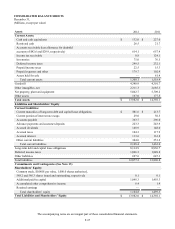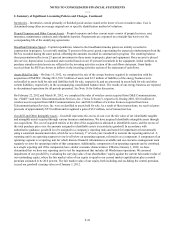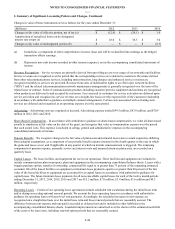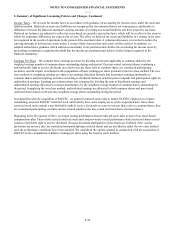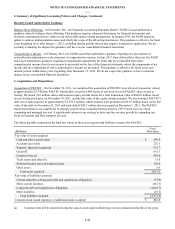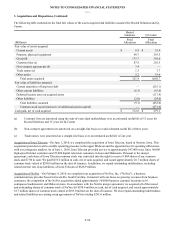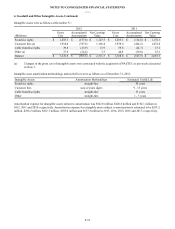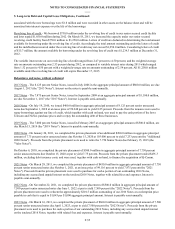Windstream 2012 Annual Report Download - page 143
Download and view the complete annual report
Please find page 143 of the 2012 Windstream annual report below. You can navigate through the pages in the report by either clicking on the pages listed below, or by using the keyword search tool below to find specific information within the annual report.
NOTES TO CONSOLIDATED FINANCIAL STATEMENTS
____
F-45
2. Summary of Significant Accounting Policies and Changes, Continued:
Income Taxes – We account for income taxes in accordance with guidance on accounting for income taxes, under the asset and
liability method. Deferred tax assets and liabilities are recognized for the estimated future tax consequences attributable to
differences between the financial statement carrying amounts of existing assets and liabilities and their respective tax bases.
Deferred tax balances are adjusted to reflect tax rates based on currently enacted tax laws, which will be in effect in the years in
which the temporary differences are expected to reverse. The effect on deferred tax assets and liabilities of a change in tax rates
is recognized in the results of operations in the period of the enactment date. A valuation allowance is recorded to reduce the
carrying amounts of deferred tax assets unless it is more likely than not that such assets will be realized. In addition, we
adopted authoritative guidance which addresses uncertainty in tax positions and clarifies the accounting for income taxes by
prescribing a minimum recognition threshold that the income tax positions must achieve before being recognized in the
financial statements.
Earnings Per Share – We compute basic earnings per share by dividing net income applicable to common shares by the
weighted average number of common shares outstanding during each period. Our non-vested restricted shares containing a
non-forfeitable right to receive dividends on a one-to-one per share ratio to common shares are considered participating
securities, and the impact is included in the computation of basic earnings per share pursuant to the two-class method. The two-
class method of computing earnings per share is an earnings allocation formula that determines earnings attributable to
common shares and participating securities according to dividends declared (whether paid or unpaid) and participation rights in
undistributed earnings. Earnings per common share was computed by dividing the sum of distributed earnings and
undistributed earnings allocated to common shareholders by the weighted average number of common shares outstanding for
the period. In applying the two-class method, undistributed earnings are allocated to both common shares and non-vested
restricted shares based on the pro-rata weighted average shares outstanding during the period.
In conjunction with the acquisition of PAETEC, we granted restricted stock units to former PAETEC employees to replace
outstanding, unvested PAETEC restricted stock units held by these same employees as of the acquisition date. Since these
restricted stock units contain a non-forfeitable right to receive dividends on a one-to-one per share ratio to common shares, they
are considered participating securities and are treated similar to the non-vested restricted shares discussed above.
Beginning in the first quarter of 2011, we began issuing performance-based restricted stock units as part of our share-based
compensation plan. These newly issued restricted stock units and previously issued performance-based restricted shares issued
contain a forfeitable right to receive dividends. Because dividends attributable to these shares are forfeited if the vesting
provisions are not met, they are considered non-participating restricted shares and are not dilutive under the two class method
until the performance conditions have been satisfied. We considered the options granted in conjunction with the acquisition of
PAETEC in the computation of dilutive earnings per share using the treasury stock method.




